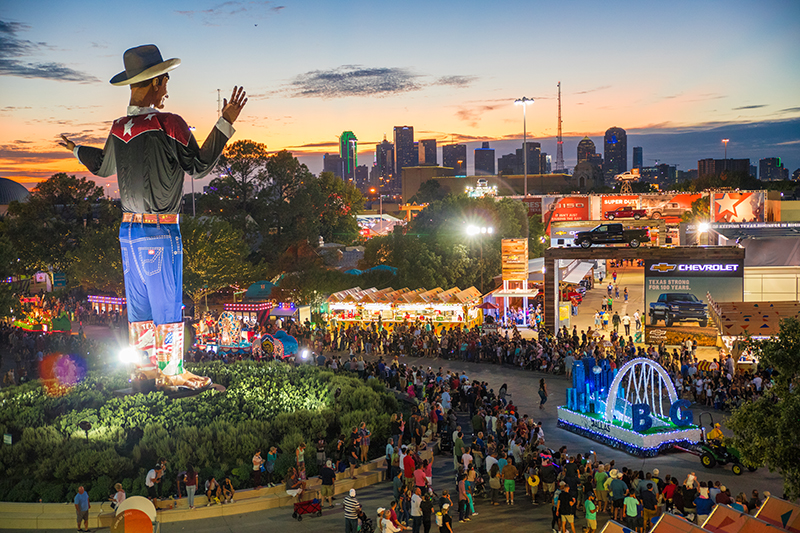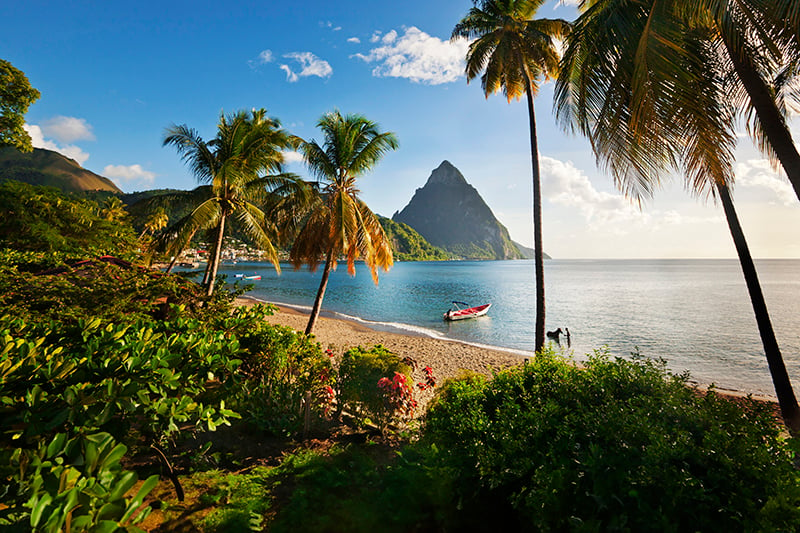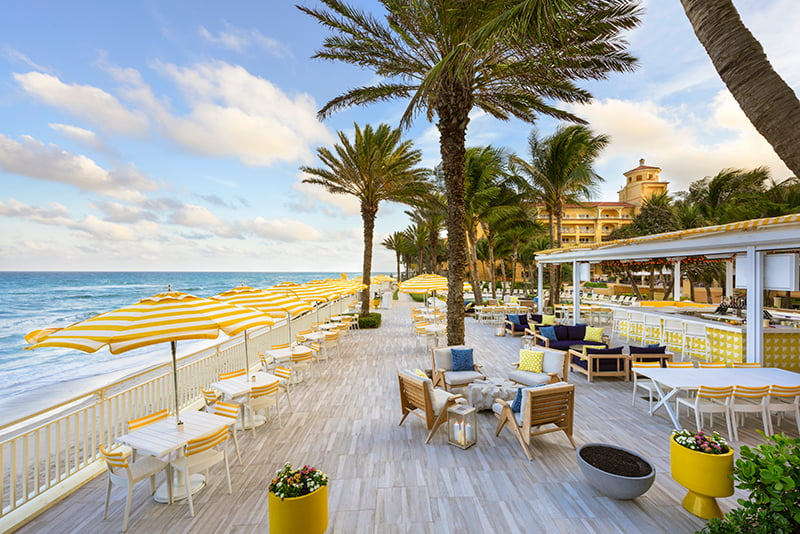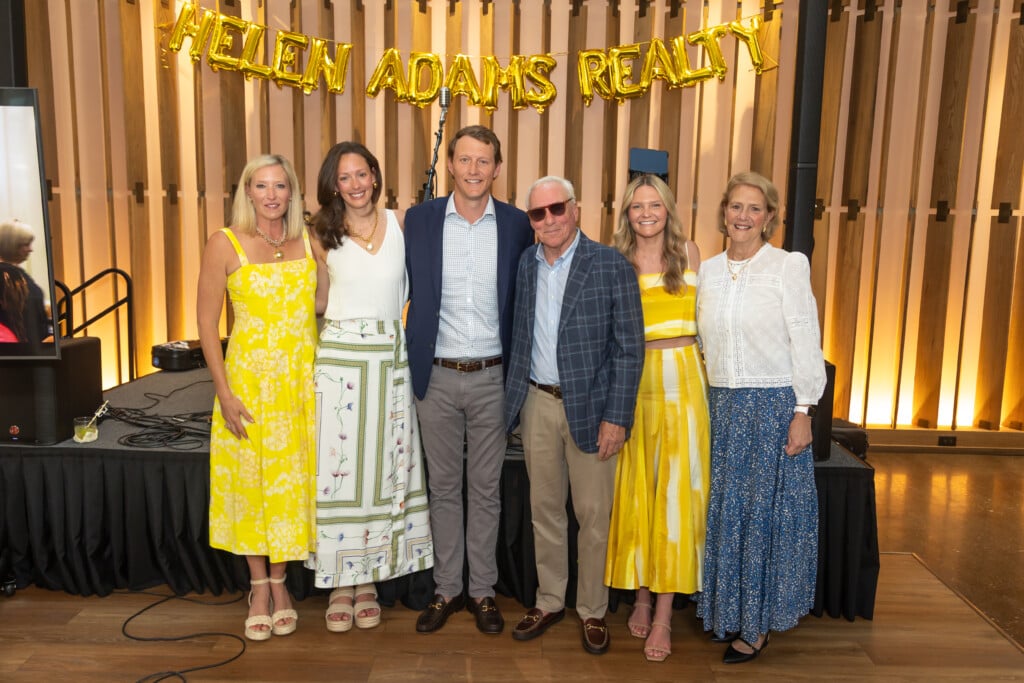Travel From CLT: Dallas
Where the margaritas are strong and cowboy culture is stronger

Today, Dallas is known for Tex-Mex cuisine, #hoitytonk style, and, thanks to Netflix, the Dallas Cowboys Cheerleaders. But the city has a rich history that predates the Kennedy assassination in 1963. Dallas was founded in 1841 as a trading post for settlers heading west. The railroad helped cement Dallas’ position as a major trading center, and the 20th-century Texas oil boom ushered in another period of dramatic growth—and backstabbing, lust, and greed, thanks to the Ewing family.
Dallas is the ninth-largest city in the U.S., and like Charlotte, its growth continues to be fueled by the banking and tech industries. It’s an original Southern boomtown, an indication of what Charlotte could be 20 years from now. Dallas attracts thousands of out-of-state transplants each year and sends a clear message to visitors: This is an exciting place to be.
The Big D is also full of tree-lined neighborhoods, open-air shopping centers, a colorful arts district, and one of the largest municipal park systems in the country. Cowboy culture is ingrained in the city’s identity, and it’s certainly true that everything’s bigger in Texas, from pickup trucks to high school football stadiums. Dallas’ Fair Park is home to the largest and longest-running state fair in the country, where Big Tex towers 55 feet in the air. It’s an easy two-and-a-half-hour flight from Charlotte—and a splendid place to get a little bit of country and a little bit of city in one visit.

The Ritz-Carlton Dallas, Las Colinas has suites and villas with private patios, a poolside bar, and two 18-hole golf courses. courtesy, The Ritz-Carlton Dallas, Las Colinas
STAY
The Ritz-Carlton Dallas, Las Colinas is less than 10 minutes from DFW Airport and positioned between downtown Dallas and Fort Worth, so you can explore both cities and still enjoy a resort-style vacation. The 400-acre property, formerly a Four Seasons, recently underwent a $55 million renovation. The interior is a blend of old and new, with a sleek lobby bar and club lounge and guest rooms decorated with stallion figurines and cow statues to honor the site’s history as a cattle ranch. Practice your swing at two 18-hole golf courses, sip a paloma in a poolside cabana, book a massage at the 14,000-square-foot spa, and have dinner at Knife Italian, the new on-site restaurant from Michelin-starred chef John Tesar. The hotel does not provide shuttle service, though, so you’ll need to rent a car or call an Uber to explore downtown. If you prefer to stay closer to the city center, The Joule is a revitalized 1920s hotel that puts you within walking distance of the Dallas Arts District. Hotel Swexan, another boutique hotel in the nearby Harwood District, has a 20th-floor pool and bar, weekend tea service, and a signature steakhouse.
EAT
Ditch the pancakes-and-eggs routine and check out Xamán Café, a charming neighborhood coffeehouse and agave bar. Order the chilaquiles (fried corn tortilla chips simmered in a brothy sauce and topped with cheese and a fried egg) and enjoy liquored-up coffee libations like the Espresso Martinez. For some bomb barbecue, head to Pecan Lodge in Deep Ellum, a former warehouse district that’s found new life with street art, live music, bars, and restaurants. Order at the counter and sit in the 70-seat dining room or grab a picnic table on the patio and feast on platters of brisket, pulled pork, and giant beef ribs. Burger House has three Dallas locations, but the OG has been a fixture in the Highland Park neighborhood for 73 years. Devour a double cheeseburger and seasoned fries at a rickety picnic table—and buy a jar of that magic seasoning on your way out. For proper Tex-Mex, head to Muchacho in University Park and enjoy Brisket Flautas and Picadillo Empanadas on branded leather placemats and sip a frozen marg with a sangria swirl. (Fun fact: Dallas is the birthplace of the frozen margarita machine.)

The Wild Detectives is an independent bookstore and café in the historic Bishop Arts District. Courtesy, Visit Dallas: Joseph Haubert
PLAY
The Sixth Floor Museum at Dealey Plaza remains one of Texas’ most-visited sites, and it’s worth a visit if it’s your first time in Dallas. The former book depository was made famous when Lee Harvey Oswald assassinated President John F. Kennedy; today, it houses exhibits that detail JFK’s life, presidency, and assassination. The Dallas Arboretum and Botanical Garden is one of the top botanical gardens in the world, with 66 acres of year-round floral displays. Come between Feb. 24 and April 8 for Dallas Blooms, the largest floral festival in the Southwest, and see more than 500,000 spring-blooming bulbs, 3,000 azaleas, and life-size Texas-themed topiaries. Highland Park Village, aka the Beverly Hills of Dallas, is a high-end, Mediterranean-style shopping center with luxury stores like Dior, Jimmy Choo, and Cartier. If bookstores are more your speed, visit The Wild Detectives in the historic Bishop Arts District. The renovated Craftsman feels like a cozy living room, with bookshelves full of rare titles, and the café serves coffee, tea, cocktails, and local beer. For a fun night out, stop by Double D’s, a “five-star dive bar” in the Design District with wood-paneled walls, tattered couches, shag rugs, and a cocktail menu that includes Double D’s Cold AF Martini.
COWBOYS AND CULTURE
It’s the second half of “Dallas-Fort Worth,” but this city has an identity all its own. Fort Worth is a 45-minute drive from downtown Dallas and has some seriously Western roots. Put on your Lucchese boots and spend a day at the Fort Worth Stockyards, where you’ll see a real-life cattle drive, a championship rodeo, and the Texas Cowboy Hall of Fame. (Feel free to stroll around with an adult beverage, too, because it’s legal here.) Visit The Kimbell Art Museum, which has a sculpture garden designed by Japanese American artist Isamu Noguchi and a permanent collection of works by Rembrandt, Monet, Picasso, and more. Then check out the Fort Worth Water Gardens, billed as a “cooling oasis in the concrete jungle,” where you can explore elevated walkways and freestanding steps above waterfalls, pools, and fountains.






